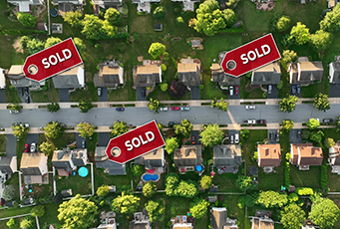Are you or a loved one looking for a living option to help reduce the burden of household duties and ultimately aid your well-being as you age? If so, use the following information as a guide to what different living facilities offer and the related costs.
Home Care - Aging in Place
Most Americans would prefer to receive care in their homes if possible. However, to be safe at home as residents age, modifications to the house may be necessary, such as eliminating stairs, widening doorways for walkers and/or wheelchairs, or making bathroom facilities more accommodating.
In addition, knowledge regarding local home care agencies and/or community services that can meet care needs will be necessary.
Appropriateness: For those who are currently independent but possibly require minor assistance with one or two activities of daily living (bathing, cooking, dressing, transferring, etc.) or medical treatments. Staying at home would be less practical or affordable for those who require more skilled care.
Costs: The median cost of home care for a homemaker is $33 per hour, and for a home health aide, it is $34 per hour. Depending on the individual's needs, home care services can range from once per week to 24 hours a day.
Assisted Living Communities
These communities are available for those who may need assistance with daily living but do not require skilled care. Needs may include help with medications, meal preparation, housekeeping, etc.
Assisted living communities offer private apartments, usually including a kitchenette. Staff is available daily for added safety, and most communities offer transportation, social activities, exercise facilities, etc. Some also offer a memory care unit.
Appropriateness: This is for seniors who are relatively healthy but unable to perform all activities of daily living.
Costs: Entrance fees/deposits are often required and vary by community. A flat rate would be charged for basic services (meals and rent); additional fees would be charged for special services.
In 2020, the average cost of a one-bedroom apartment was $5,900 per month ($70,800 annually).
Nursing Homes
Nursing homes are available for seniors who require 24-hour monitoring and medical assistance. Skilled medical attention (physical therapists and physicians) is available on site, as are social activities and dining services.Appropriateness: For those who suffer from severe or debilitating physical or cognitive disability and are unable to care for themselves.
Costs: The average cost of a nursing home facility is $9,277 per month ($111,324 per year) for a semi-private room and $10,646 per month ($127,752 per year) for a private room.
Memory Care Facilities
Memory care is often provided in a separate wing of assisted living or nursing home facilities. The fully staffed and monitored facility provides intensive, long-term medical care to residents with serious health and dementia conditions. High security is in place to prevent residents from wandering off and becoming lost (a common symptom of Alzheimer's disease or dementia).Appropriateness: For those who suffer from Alzheimer's disease or dementia and require 24-hour supervised care.
Costs: Memory care facilities vary significantly, but a common estimate is around $6,450 per month, according to A Place for Mom. However, this figure can range from $4,000 to over $10,000 depending on factors like location, the specific facility, and the level of care required.
Continuing Care Retirement Communities (CCRC)
Appropriateness: Those who are independent and wish to live in a community with others who share the same life circumstances but also want to stay in the same place as they continue to age and require care in their later years.
Costs: The national average minimum entrance fee is $300,000. However, this will depend on location, amenities, contract type, and type of accommodations. The average 2024 monthly cost with the entrance fee was $4,166. The cost to rent in a CCRC was slightly lower, at $3,747 per month on average.
Summary
Determining the appropriate housing options for yourself or a loved one in the later years can be emotionally and financially challenging. Developing a plan early will help make this life transition more enjoyable and easier for you and your family. Schedule a Consultation
We have helped our clients answer these questions and more. If you want a clear understanding of your financial future, and need help making changes to reach your goals, schedule a consultation and we can get started.
The material has been gathered from sources believed to be reliable, however Bedel Financial Consulting, Inc. cannot guarantee the accuracy or completeness of such information, and certain information presented here may have been condensed or summarized from its original source. To determine which investments or planning strategies may be appropriate for you, consult your financial advisor or other industry professional prior to investing or implementing a planning strategy. This article is not intended to provide investment, tax or legal advice, and nothing contained in these materials should be taken as such. Investment Advisory services are offered through Bedel Financial Consulting, Inc. Advisory services are only offered where Bedel Financial Consulting, Inc. and its representatives are properly licensed or exempt from licensure. No advice may be rendered unless a client agreement is in place.
Recommended Articles
Rent, Relax, and Write Off: Tax Tips for Renting Your Second Home
With additional income comes additional taxation. While...





